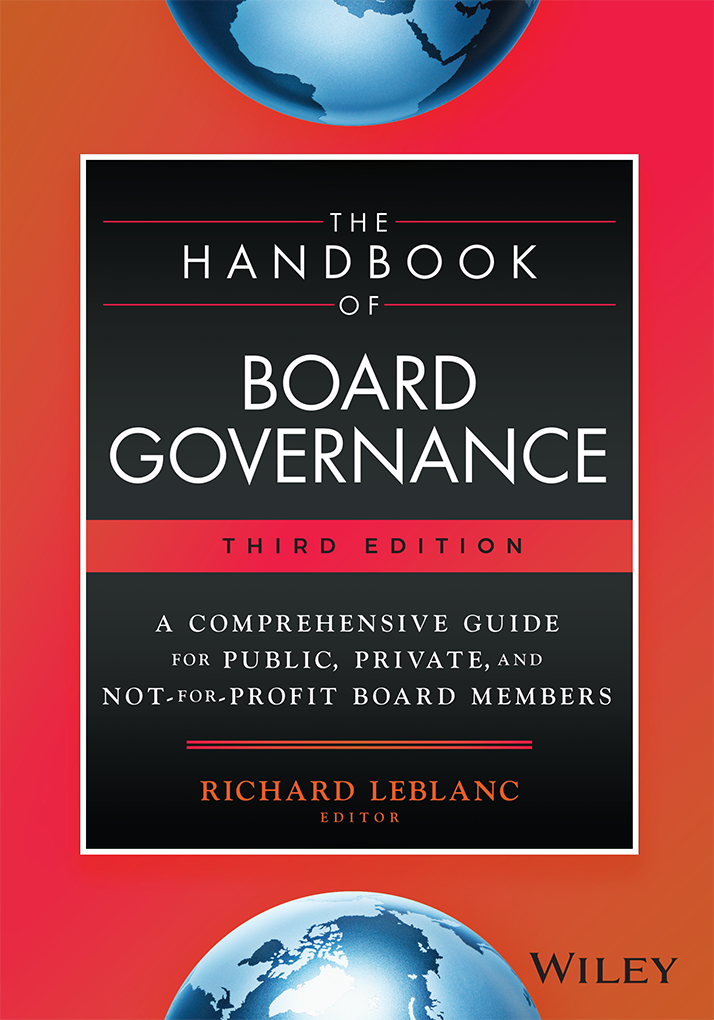On Monday August 21st, I am delivering the opening keynote address to the annual Canadian Society of Corporate Secretaries conference in Quebec City. (See my PDF slide deck with embedded links here). It is beneficial that the conference is being held in Quebec City this year. In Quebec, Premier Charest mandated into law in 2007 that by December 2011, boards of directors of all Quebec enterprises need to be comprised of an equal number of men and women, and that the cultural make-up of boards reflect more the ethnic diversity of Quebec.
Quebec City academic Marie Marie-Soleil Tremblay was also a part of a working group of eight Canadians who addressed board diversity in a submission that was recently made to the European Commission, which is contemplating introducing initiatives to make boards of directors within European Union countries more diverse. (See the group’s report here and the European Union “Green Paper” on proposed corporate governance reforms here (PDF). The questions on board and gender diversity are 5 and 6.) I plan to draw on our group’s submission in my address. The diversification of Canadian boards will be my opening topic. I also plan to show this video provided to me by Catalyst in the US.
With the exception of the Province of Quebec, Canada has been noticeably absent from the global boardroom diversity movement. Major initiatives by market regulators – ranging from disclosure of diversity plans, to self-imposed objectives, to full-fledged board quotas – in the US, UK, Australia and a number of European countries are well underway. At a the 2011 Institute of Corporate Directors Fellowship Awards Gala, Spencer Lanthier, who was one of four Canadian directors honored, called boardroom diversity “the number one issue in corporate governance right now” and that boards should just “get on with it.”
It is difficult without some form of government leadership (e.g., disclosure of diversity plans in a “comply or explain” manner), similar to that of other countries, to expect corporate boards to “get on with it,” given that boards are of a limited size and bringing on a woman by necessity might require removing a man. Both women and men tell me in confidential interviews that the system is presently “stuck.” The figures in Canada for women on boards have hovered around 8-14%, depending on the survey, and have been stagnant for many years, with only small upticks. Australia recently reported, after the Australian Stock Exchange required companies to state diversity objectives and progress towards meeting them, a whopping 600% increase in women being appointed to corporate boards in just two years. Now women comprise 30% of all new director appointments. The figure used to be 7.5%.
There is no reason women should not comprise a similar percentage of all board appointments in Canada. In the aftermath of the financial crisis, which includes scathing reports (here and here (PDF)) documenting governance and regulatory breakdowns, governments want to make sure that boards can be as strong as they possibly can be. There is academic evidence that women make better monitors within boardrooms and that men even enhance their performance when women come on to boards. (See my article in English, here, and in French, here.) There is also a case to be made that group-think (which means groups agreeing too much by virtue of similar background and social pressure to conform) is counteracted with greater diversity, in all forms (women, visible minorities, Aboriginal Peoples and people with disabilities). Beyond the academic case however, the business case is that having diverse boards ensures access to a broader talent pool of Canadian directors, as Canada increasingly sees China, India and Brazil as trader partners and our companies need to compete in the global marketplace.
The case against gender diverse boards is that many or most women are not former CEOs and do not have broad-based, business experience, with direct responsibility for profit and loss, which is helpful experience for boards. Yet there is scant academic evidence that CEOs make better directors. Moreover, enterprise leadership includes not-for-profit, professional firms, and divisional leadership within companies, as well as “up-and-comers” in the executive suites, such as CFOs and COOs. Competency matrixes (required for boards under National Policy 58-201 Corporate Governance Guidelines, section 3.12) now include skills such as social media/technology, sustainability, human resources, and public policy, where women are particularly strong. Expatriates with international experience (in India and Asia) who know the players and the markets are of enormous assistance to management teams when they sit on boards.
It is also not the case that diverse directors cannot be found, or the pool is too small, which is another argument against diverse boards. My LinkedIn® Group, Board Advisors, for example, includes 460 members. My profile alone has over 800 connections that include practicing directors and prospective directors at the top of their game. I am interviewing over 100 directors for my research and half of them I expect will be female and many will be visible minorities. There is a rich network of very well qualified directors out there for board positions. Search firms and nominating committees of boards would be well advised to look harder, and more creatively. The world has changed and prospective directors cannot simply be found at private clubs like they used to. Canada has incredibly talented directors, and we need to use all the available talent we can.
The benefits for board diversity is are enormous. Boards need to get on with it, yes, but so do our government and regulatory leaders in providing that extra “nudge.” Having companies disclosure diversity plans, for the board, senior management and the company as a whole, is a needed first step.
Posted by Richard Leblanc on Aug 22, 2011 at 1:44 am in Diversity, Women on Boards |












